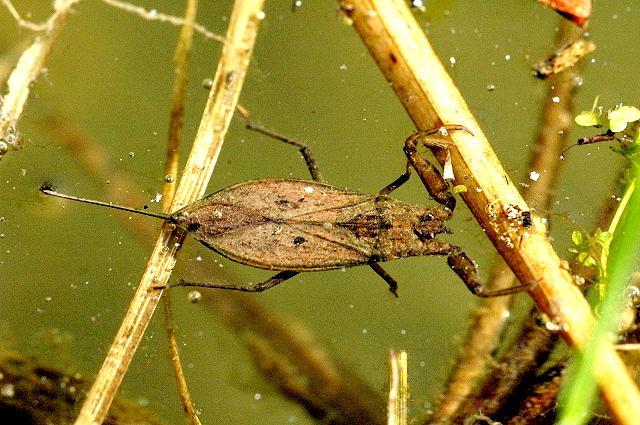Reproduction
The mating process of water scorpions takes place from early April until late May. The male species lies diagonally across and above the female, grasping her thorax with his front legs during mating. The front legs are not only used for reproduction but also for capturing prey. The water scorpions insert their eggs into aquatic plant tissues (ex. rotting plants, moss, or algal carpets- cyanidium caldarium) and are laid shortly after the intercourse and preferably at dusk. It takes about 2 minutes for one egg to be dropped but up to 32 eggs can be placed in a single night. The male then looks after the eggs until they hatch. During the weeks of embryonic development oxygen is taken up by diffusion from the surrounding plant tissue. After 2-4 weeks the nymph then emerges. They can be found in the warm, shallow waters like the margins of ponds because nymphs are like tiny adults and that is their primary habitat. Nymphs lay low to develop their respiratory tail and wait for suitable prey to pass and then snatch them with their strong front legs. The nymphs shed or molt their exoskeleton and replace them as they continue to grow which can take up to 6 to 8 weeks. Once the water scorpion stops growing they have reached the adult stage. They now have fully developed wings and bodies. This process the Nepa cinerea goes through is called incomplete metamorphosis because it only has three stages of its life cycle compared to some organisms that undergo complete metamorphosis which go through four different stages.
